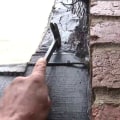In modern construction, precision prefabrication has become a transformative approach that significantly reduces on-site waste and improves project efficiency. This method involves fabricating building components—such as walls, electrical systems, piping assemblies, and structural elements—off-site in a controlled environment, then transporting them to the construction site for installation. Unlike traditional on-site methods, where materials are cut, modified, and assembled amid unpredictable weather and human error, prefabrication allows for a higher degree of precision, minimizing waste generated during construction. This precision ensures that every piece fits exactly as intended, reducing the need for rework, excess materials, and unnecessary disposal. The result is a cleaner, more sustainable job site that aligns with today’s growing emphasis on environmental responsibility and resource conservation.
Controlled Manufacturing Environments and Material Efficiency
One of the key advantages of precision prefabrication is that it takes place in a controlled factory setting. This environment allows for consistent monitoring of measurements, tolerances, and quality standards that are often impossible to maintain on a busy construction site. When materials are handled in this controlled setting, they are protected from damage caused by moisture, dust, or temperature fluctuations, leading to less material loss and fewer quality defects. Additionally, cutting and assembly processes are optimized through automation and computer-aided design (CAD) systems, which ensure that every material—whether steel, concrete, or wiring—is used efficiently. For example, off-cuts from one component can be reused in another, further reducing scrap. This level of material optimization not only cuts down waste but also lowers overall project costs, helping contractors meet budget targets without compromising quality.
Streamlined Installation and Reduced Site Impact
Prefabricated components are designed to fit seamlessly upon arrival, reducing the need for on-site adjustments that typically generate debris and wasted materials. The installation process becomes faster and more predictable, minimizing disruptions to the surrounding environment. On-site waste bins that once overflowed with packaging, timber scraps, and unused drywall now remain largely empty, as most of the cutting and shaping occur off-site. This streamlined approach also decreases noise pollution, dust, and carbon emissions associated with transportation and heavy machinery. Precision prefabrication contributes to cleaner, safer, and more organized construction zones—conditions that are particularly beneficial for urban projects where space is limited and environmental regulations are strict.
Integrating Electrical and Structural Prefabrication
Electrical systems are among the most critical components that benefit from prefabrication. Pre-assembled conduits, wiring harnesses, and lighting frameworks can be manufactured off-site to exact specifications, ensuring proper alignment and easy installation once on location. Collaboration with experienced electrical professionals, such as One Point Sydney Electricians, enhances this process by integrating electrical design into the overall prefabrication workflow. Their expertise ensures compliance with safety standards, efficient load distribution, and minimal material waste during both manufacturing and installation. This synergy between electrical and structural prefabrication exemplifies how interdisciplinary cooperation drives sustainability and precision across all stages of construction.
Advancing Sustainability and Project Efficiency
Precision prefabrication is a cornerstone of sustainable construction. By minimizing material waste, reducing transportation emissions, and shortening construction timelines, it contributes to lower environmental footprints and more efficient project delivery. The consistent quality achieved through prefabrication also extends the lifespan of structures, reducing the long-term need for repairs or replacements—further conserving resources. In addition, digital modeling tools like Building Information Modeling (BIM) enhance coordination between architects, engineers, and fabricators, ensuring every component is produced and installed with minimal error.
A Future of Smarter, Cleaner Construction
The future of the construction industry lies in smarter, cleaner, and more resource-efficient practices—and precision prefabrication leads the way. As technology continues to evolve, automation and robotics will make prefabrication even more precise, further reducing waste and improving project consistency. Companies adopting this approach not only meet environmental goals but also gain competitive advantages through faster turnaround times and reduced costs. Ultimately, precision prefabrication is more than a trend—it represents a shift toward sustainable innovation, where efficiency and environmental responsibility coexist harmoniously to build a better, cleaner future.



